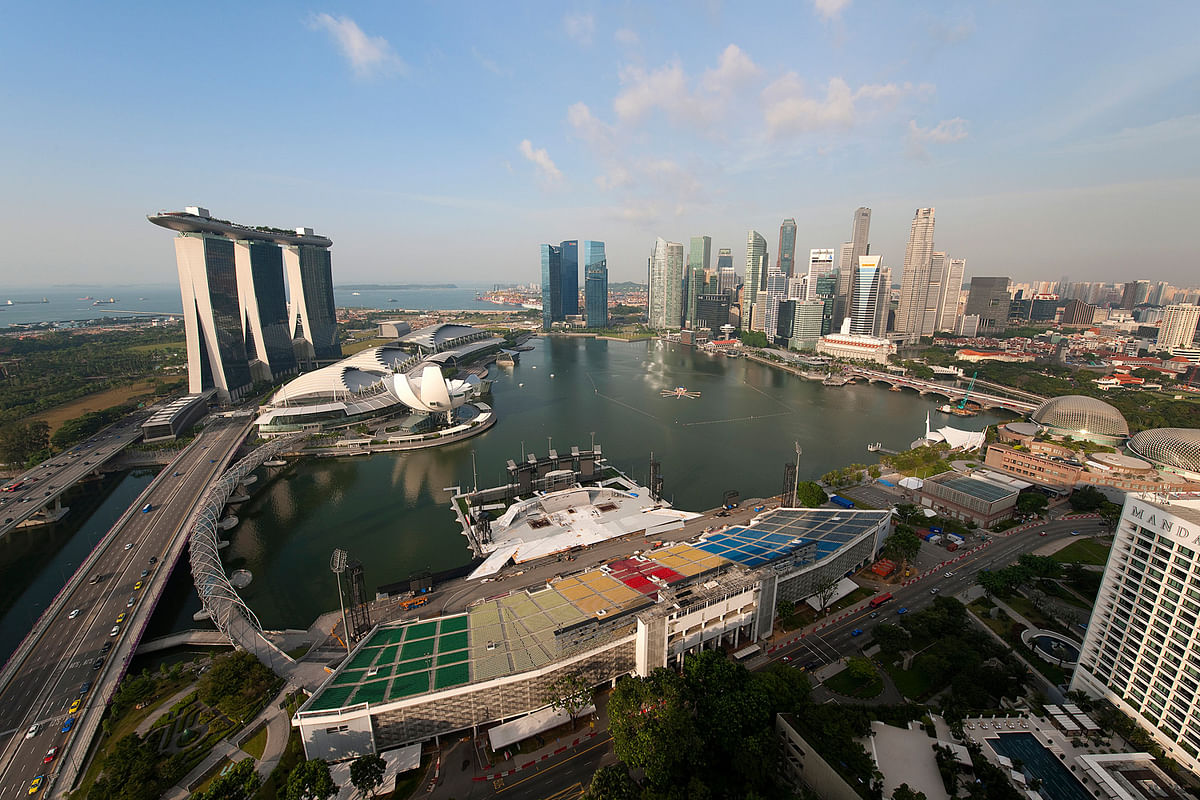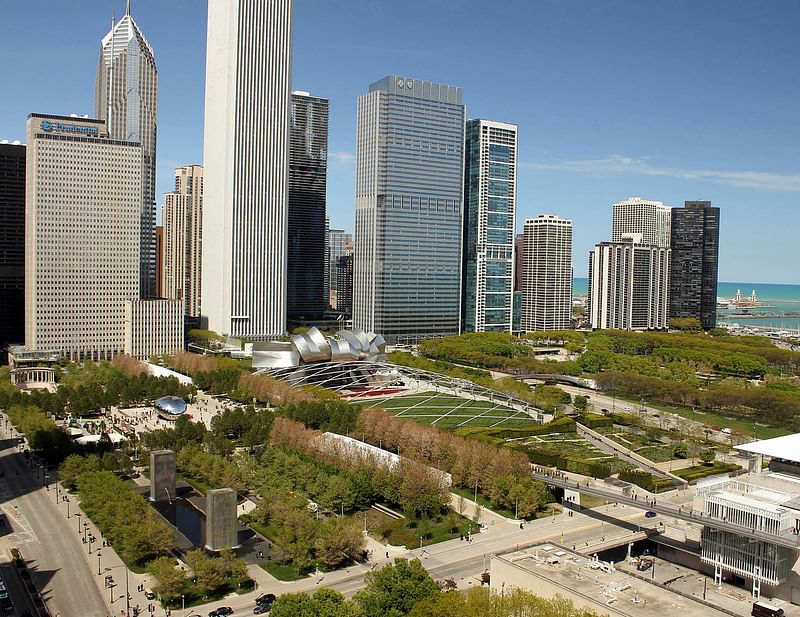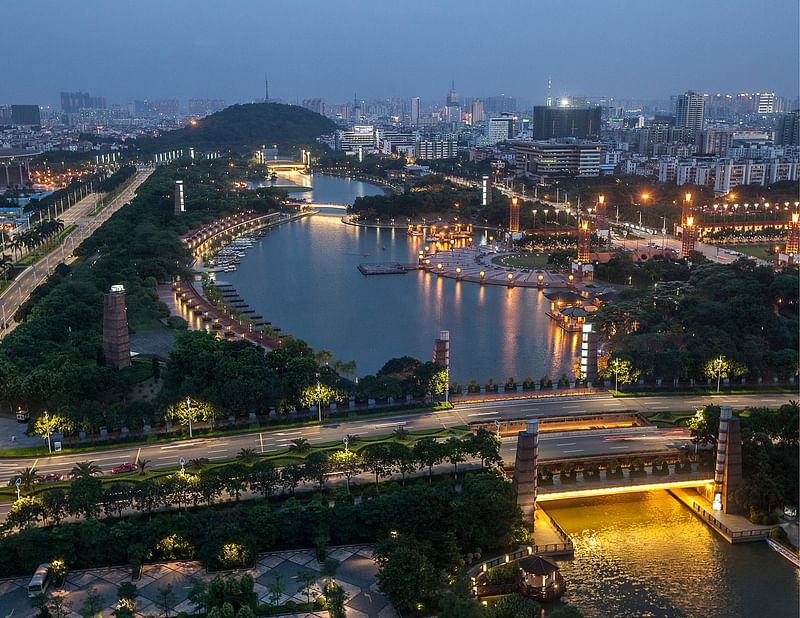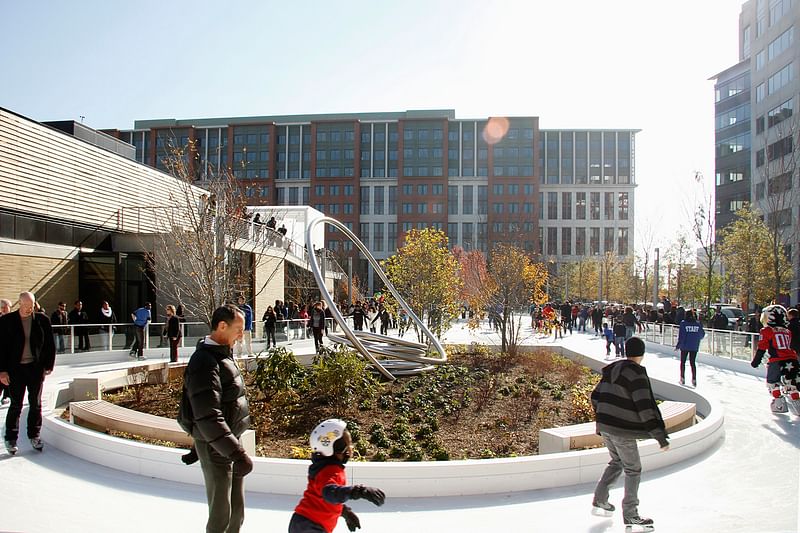Marina Bay, Millennium Park, Tongva Park among ULI Urban Open Space Award finalists
By Bustler Editors|
Friday, Jun 5, 2015

Related
The Urban Land Institute's international Urban Open Space Award competition is down to the final six projects. Every year, the ULI commends exemplary large- and small-scale urban public spaces that socially enriched and revitalized the economy of their local communities.
Eligible projects had to be open for more than one year but no more than 15 years and -- needless to say -- they had to be an overall welcoming, comfortable, and frequently used space to take part in the competition.
The finalists for 2015 are:
- Marina Bay in Singapore
- Millennium Park in Chicago, Illinois
- Myriad Gardens in Oklahoma City, Oklahoma
- Thousand Lantern Lake Park System in Foshan, GuangDong, China
- Tongva Park and Ken Genser Square in Santa Monica, California
- Washington Canal Park in Washington DC
One project will win the $10,000 prize during the ULI Fall Meeting on October 5-8 in San Francisco, CA. Take a gander at the projects right below.
Marina Bay, Singapore
Owner/Designer: Singapore Urban Redevelopment Authority
"Located at the heart of Singapore’s city centre, against the backdrop of its signature skyline, Marina Bay presents an exciting array of opportunities to live, work and play. The larger Marina Bay area was progressively reclaimed over a 40 year period from the 1970s to allow for the seamless extension of the Central Business District and the creation of a new city, focused around an urban waterfront. Today, Marina Bay has been transformed into a vibrant precinct with a mix of commercial, residential, hotel and entertainment uses set amidst well-landscaped public spaces and parks that serve as green lungs, event venues and gathering spaces for those living and working there."

Millennium Park, Chicago
Owner: City of Chicago; Designer: Edward Uhlir, FAIA, et al.
"In 1998, Mayor Richard M. Daley established a partnership with Chicago’s philanthropic community the Millennium Park Foundation (MPF) a 501c3 not for profit corporation and together they produced Millennium Park which opened on July 16, 2004. It is located at the northwest corner of Grant Park and transformed 16.5 acres of rail lines and a surface parking lot and another eight acres of shabby park land built on top of a deteriorated underground garage into a unique outdoor cultural venue. It was built on top of two new underground parking garages, a commuter rail station and a bus roadway making it one of the largest public roof landscapes in the USA.
Many architects, landscape architects and artists have contributed to create this new Chicago icon including McDonough Associates, Gehry Partners, Hammond Beeby Rupert Ainge, Renzo Piano Building Workshop, GGN, OWP/P, SOM, Terry Guen Design, Harley Ellis Devereaux and Muller and Muller."

Myriad Gardens, Oklahoma City, Oklahoma
Owner: Myriad Gardens Foundation; Designer: Office of James Burnett
"Between 2009-2011, the City of Oklahoma City in coordination with the Myriad Gardens Foundation and Alliance for Economic Development, invested over $42 million to completely transform the Myriad Gardens. The goals of the project were to take the highly-underused yet prime 15-acre urban downtown garden and park site that had fallen into disrepair, and completely redesign all outdoor areas into a state-of-the art, beautiful, green and highly-active destination to improve the quality of life in Oklahoma City and continue the renaissance of the entire downtown."

Thousand Lantern Lake Park System, Foshan, GuangDong, China
Owner: Nanhai District Government; Designer: SWA Group et al.
"The Thousand Lantern Lake Park system represents a defining infrastructural success that’s integral to Nanhai’s strategic approach of urban transformation over the past 15 years. The Nanhai District exemplifies a successful, people-oriented urban development mode, and provides creative solutions for attracting people to its newly constructed Guangdong Financial High-tech Industrial Zone. The development solves one of the greatest challenges similar third-tier Chinese cities face: how to retain a community’s vitality while the city upgrades its industrial structure to modern functionality, including a redefined spatial layout."

Tongva Park and Ken Genser Square, Santa Monica, California
Owner: City of Santa Monica; Designer: James Corner Field Operations
"Tongva Park & Ken Genser Square embody a new type of urban landscape that is active, innovative, resource-conscious, and natural. Shaped by extensive public participation, the design creates a contemporary and transformative series of gardens and active spaces that symbolically redefine and interconnect the center of Santa Monica. Inspired by the Southern California arroyo landscape of washes and ravines that once defined the site, a series of braided pathways appear to organically emerge from the footsteps of City Hall, extend west, and weave the park into the fabric of the City. Dramatic rising and falling topography reinforces the fluid pathway system and organize the site into four thematic hilltop areas, each calibrated to a different primary use and experience."

Washington Canal Park, Washington DC
Owner: Canal Park Development Association, Inc; Designers: OLIN and STUDIOS Architecture, dcpc
"One of the first parks built as part of the District’s Anacostia Waterfront Initiative, Canal Park presents a model of sustainability, a social gathering place, and an economic trigger for the surrounding neighborhood. Located on 3 acres of a former parking lot for district school buses, this 3-block-long park is sited along the historic former Washington Canal system. Inspired by the site’s waterfront heritage, the design evokes the history of the space with a linear rain garden and three pavilions reminiscent of floating barges. The rain garden functions as an integrated stormwater system that is estimated to save the city 1.5 million gallons of potable water per year. Stormwater is captured, treated on-site, and re-used for irrigation, building use and interactive fountains. In collaboration with OLIN, STUDIOS Architecture designed a pavilion to host a café. A second pavilion serves as a stage and a third offers storage for park amenities. 28 geothermal wells beneath the ice rink provide efficient energy supply for utilities."

Share
0 Comments
Comment as :